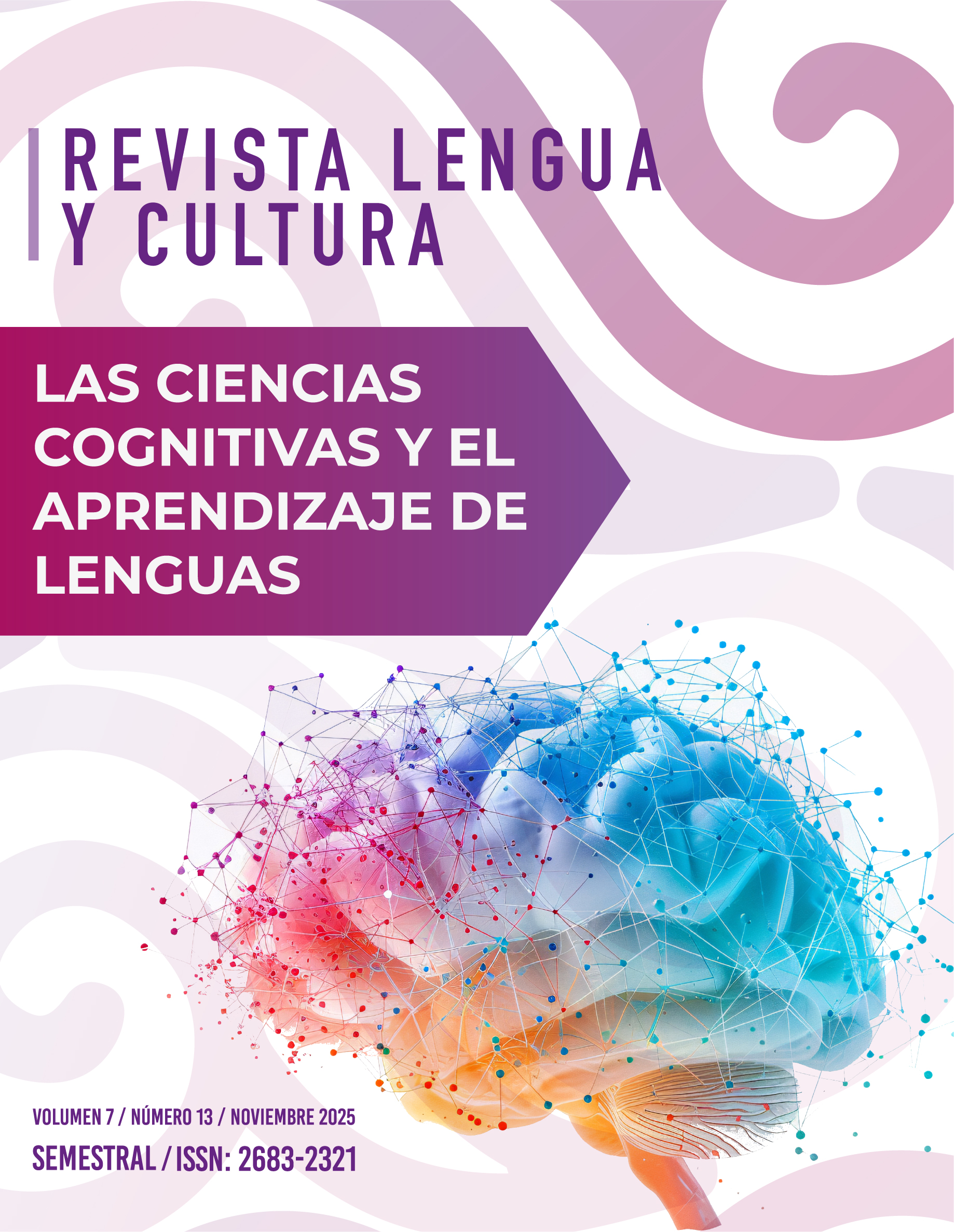Un Análisis de un Ecosistema de Aprendizaje: Knotion
DOI:
https://doi.org/10.29057/lc.v7i13.15370Palabras clave:
enseñanza del inglés como lengua extranjera, Modelo IMPAct, ecosistema de aprendizaje, pensamiento de diseño, sistema de administración de contenidosResumen
Este artículo analiza el impacto del sistema de gestión de contenido (CMS) Knotion en las aulas de inglés como lengua extranjera (EFL) explorando las perspectivas de docentes de una escuela primaria privada sobre el uso de herramientas digitales en su práctica docente. El estudio destaca cómo la tecnología ha transformado los paradigmas tradicionales de aprendizaje, influyendo en la adquisición de conocimientos, la interacción y la participación de los estudiantes en su proceso educativo. La investigación se enfoca en el uso de ecosistemas de aprendizaje, los cuales combinan tecnología y estrategias personalizadas para mejorar la educación. Muchas escuelas privadas han adoptado estas plataformas para crear experiencias de aprendizaje más atractivas y efectivas. Knotion es un ecosistema de aprendizaje integral que incorpora contenido educativo y herramientas para apoyar el desarrollo de estudiantes. Su modelo pedagógico, el método IMPAct, combina el pensamiento de diseño con la resolución de problemas para fomentar un aprendizaje transdisciplinario y significativo. Este método prepara a los estudiantes para afrontar desafíos del mundo real y desarrollar habilidades esenciales para el aprendizaje permanente. Para evaluar la efectividad de Knotion, este estudio de caso mixto recopiló datos cuantitativos mediante un cuestionario con escala de Likert aplicado a estudiantes y retroalimentación cualitativa con entrevistas semiestructuradas a seis docentes de inglés en una escuela primaria de Xalapa-Veracruz, México. Los hallazgos indican que los estudiantes se beneficiaron del método IMPAct al involucrarse con situaciones de la vida real. Este enfoque no solo mejoró sus habilidades lingüísticas y mecánicas, sino que también fortaleció su competencia intercultural y habilidades para resolver problemas. El estudio concluye que la integración de Knotion en las aulas de EFL fomenta experiencias de aprendizaje significativas, dotando a los estudiantes de competencia lingüística y pensamiento crítico necesarios para comunicarse eficazmente en contextos reales.
Descargas
Información de Publicación
Perfiles de revisores N/D
Declaraciones del autor
- Sociedad académica
- N/D
- Editora:
- Universidad Autónoma del Estado de Hidalgo
Citas
Ally, M. (2008). Foundations of educational theory for online learning. In T. Anderson (Ed.), The theory and practice of online learning (pp. 15-44). Athabasca University Press.
Brown, M., Dehoney, J., & Millichap, N. (2015). The next generation digital learning environment: A report on research. EDUCAUSE Learning Initiative. https://library.educause.edu/resources/2015/4/the-next-generation-digital-learning-environment-a-report-on-research
Chapelle, C. A. (2003). English language learning and technology: Lectures on applied linguistics in the age of information and communication technology. John Benjamins Publishing.
Coates, H., James, R., & Baldwin, G. (2005). A critical examination of the effects of learning management systems on university teaching and learning. Tertiary Education and Management, 11(1), 19–36. https://doi.org/10.1080/13583883.2005.9967137
Creswell, J. W., & Plano Clark, V. L. (2017). Designing and Conducting Mixed Methods Research. SAGE Publications.
Cruz Martínez, C. A. (2024). Construcción de identidades a través del efecto transformativo del estudio del inglés como lengua extranjera. Revista Lengua Y Cultura, 6(11), 34–43. https://doi.org/10.29057/lc.v6i11.13059
Dang, T., & Robertson, M. (2010). Impacts of learning management system on learner autonomy in EFL learning. International Education Studies, 3(3). https://doi.org/10.5539/ies.v3n3p3
Freire, P. (1970). Pedagogy of the oppressed (M. B. Ramos, Trans.). Herder and Herder.
Gill, P., Stewart, K., Treasure, E., & Chadwick, B. (2008). Methods of data collection in qualitative research: interviews and focus groups. British Dental Journal, 204(6), 291-295.
Godwin-Jones, R. (2011). Emerging technologies: Autonomous language learning. Language Learning & Technology, 15(3), 4-11. https://doi.org/10125/44212
Greenberg, L. (2002). LMS and LCMS: What's the Difference? Learning Circuits. https://www.learningcircuits.org/2002/dec2002/greenberg.htm
Irzawati, I. (2021). The Utilization of Digital Platforms in Online Learning: EFL Students’ Perspectives. Indonesian EFL Journal, 7(2), 131–138. https://journal.uniku.ac.id/index.php/IEFLJ/article/view/4566
Johnson, L., Adams Becker, S., Cummins, M., Estrada, V., Freeman, A., & Ludgate, H. (2016). NMC Horizon Report: 2016 Higher Education Edition. The New Media Consortium.
Kallio, H., Pietilä, A. M., Johnson, M., & Kangasniemi, M. (2016). Systematic methodological review: developing a framework for a qualitative semi‐structured interview guide. Journal of Advanced Nursing, 72(12), 2954-296
Khan, B. H. (2005). Managing e-learning: Design, delivery, implementation, and evaluation. Information Science Publishing.
Kincheloe, J. L., & McLaren, P. (2005). Rethinking critical theory and qualitative research. In N. K. Denzin & Y. S. Lincoln (Eds.), The SAGE handbook of qualitative research (3rd ed., pp. 303–342). SAGE Publications.
Lantolf, J. P., & Thorne, S. L. (2006). Sociocultural theory and the genesis of second language development. Oxford University Press.
Liaw, S. S., & Huang, H. M. (2011). A study of investigating learners' attitudes toward e-learning. In Proceedings of the 5th International Conference on Distance Learning and Education, 12, 28–32. IACSIT Press.
Pappas, E. (2018). Integrating sustainable development into engineering education. Journal of Cleaner Production, 181, 629-637.
Reinders, H., & White, C. (2011). The theory and practice of online learning. In The impact of digital technologies on language learning (pp. 127-149). Routledge.
Siemens, G. (2005). Connectivism: A learning theory for the digital age. International Journal of Instructional Technology and Distance Learning, 2(1), 3-10.
Tsai, S. C. (2019). Integrating English into specific content-based instruction in a blended learning environment. International Journal of Online Pedagogy and Course Design, 9(3), 14-30. https://doi.org/10.4018/IJOPCD.2019070102
Viberg, O., Hatakka, M., & Mavroudi, A. (2020). The role of digital platforms in personalized learning.
Wang, S. (2020). Adaptive Learning System for EFL Learning. In Proceedings of the 2020 6th International Conference on Education and Training Technologies (pp. 23-27). ACM. https://doi.org/10.1145/3392956.3392957
Watson, W. R., & Watson, S. L. (2007). An argument for clarity: What are learning management systems, what are they not, and what should they become? TechTrends, 51(2), 28-34. https://doi.org/10.1007/s11528-007-0023-y
Yin, R. K. (2017). Case Study Research and Applications: Design and Methods. SAGE Publications.
Zhao, Y. (2005). The future of research in technology and second language education. In Y. Zhao (Ed.), Research in Technology and Second Language Learning (pp. 445–457). Information Age Publishing.
Descargas
Publicado
Cómo citar
Número
Sección
Licencia
Derechos de autor 2025 María Isabel Rosario López, Isaí Alí Guevara Bazán

Esta obra está bajo una licencia internacional Creative Commons Atribución-NoComercial-SinDerivadas 4.0.




















